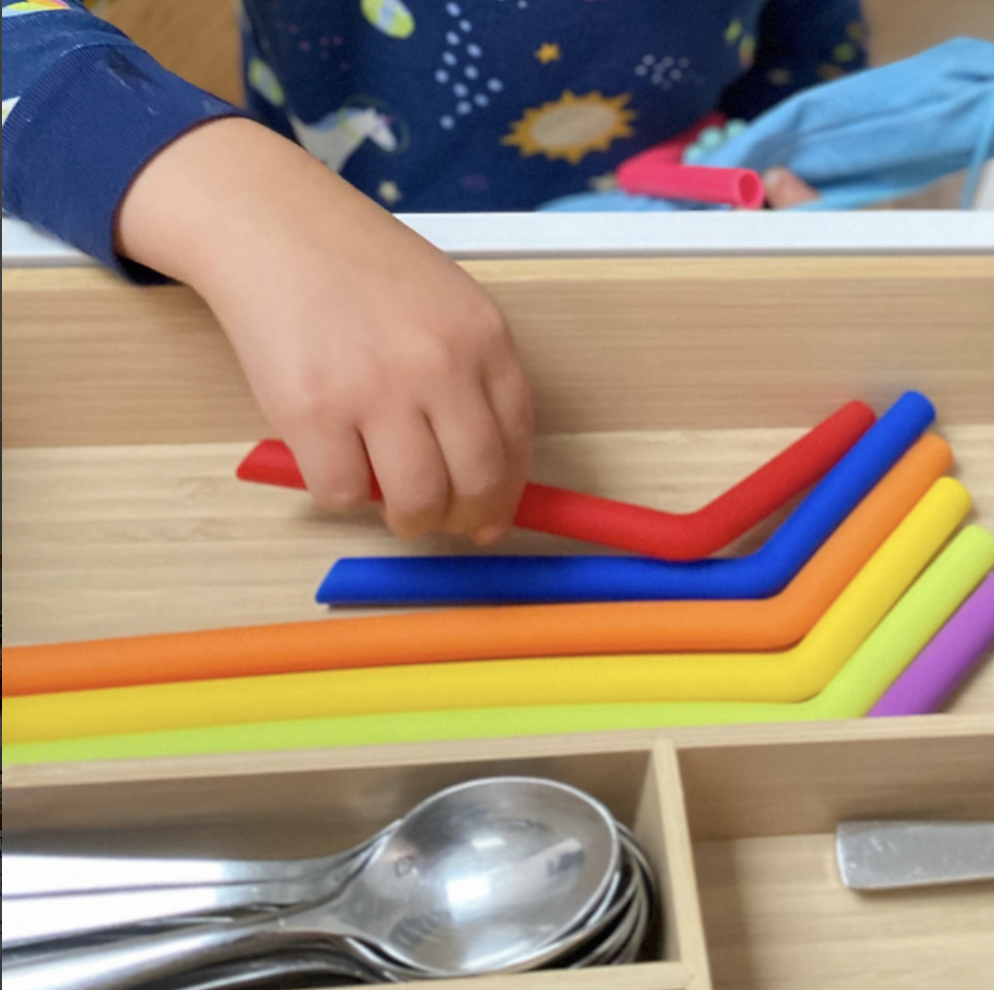How to Create a Kid-Friendly Kitchen
Does your kitchen have a snack zone?
When home organizing with parents of young children, this inevitably comes up. For any kitchen, I spend a lot of time thinking about how to engineer it where the things that are most used are within arm span. Asking how tall everyone is is critical!
This applies to children too. I remember having a precocious 1 year old and snacks (and cat food and vinegar and knives…) had to be stored out of his reach. But as he grew older and more independent, I realized that I was forgetting to make changes so that he had more autonomy in our home. Kids don’t get to make many decisions about their daily lives. Providing him with an easy way to pick his own snack could give him a little bit of control (which would hopefully help ease tantrums).
Designing a kitchen that caters to the needs of both children and parents can be a challenge. I love to cook and it was important to me to have my son with me in the kitchen to (hopefully!) foster that same love. Here are some practical tips and strategies for setting up a kid-friendly kitchen that strikes a balance between providing a little bit of kid autonomy while keeping things sane for the adults.
Establish a Snack Zone: Designate a specific area in your kitchen as a "snack zone." This area should be easily accessible to children, ideally at their eye level. Organize shelves or a drawer with child-friendly snacks. Use clear, labeled containers or transparent bags (for non readers) to make snacks more visually appealing and enticing.
Consider Child-Friendly Storage Options: Choose child accessible storage containers for snacks within their reach. Opt for lightweight and easy-to-open containers with secure lids.
Utilize Bins and Baskets: Using bins and baskets can be a practical way to organize snacks. Sort snacks into different categories such as dried fruits, nuts, crackers, or granola bars, and place them in separate containers. This not only makes it easier for kids to locate and choose their snacks but also promotes independence and decision-making. I personally love to take individually wrapped bars, fruit snacks, etc. out of their boxes and put them in larger bins for easier access.
Keep it Simple: All of those cute mini sized cooking utensils are irresistible, aren’t they? Unfortunately in my experience, all my son really wanted to play with were the adult sized versions. Feel free to use what you have first (although I do recommend these for learning early knife skills).
5. Clear those Countertops: Want a little pro tip from someone with years of restaurant experience? Keep your countertops as clear as possible when cooking with kids (or anytime really). Yes, messes will be made, but with a clear work space, you just wipe it down. I like to cook with my son right next to the sink where I can wipe the mess directly in as we go. Commercial kitchens are kept clean throughout a busy dinner service because they wipe the surfaces down constantly. That is possible only if you keep the counters relatively clear.
6. Provide a Water Station: Make water easily accessible by placing a child-friendly water dispenser or pitcher within their reach. This both helps encourage children to drink water as their primary beverage AND keeps the inevitable spills less messy than with other beverages.
7. Don’t Forget About Bowls: And cutlery and plates and straws and even lunch boxes! Consider keeping the kid versions with or near the snacks so that they can set their own table and help pack their own lunch.
Engineering a kitchen to make it easier for everyone to use doesn’t take much time and effort but the effects can be felt every day! Do you need some help making your kitchen a little more family friendly? Let’s talk! xo Melissa


